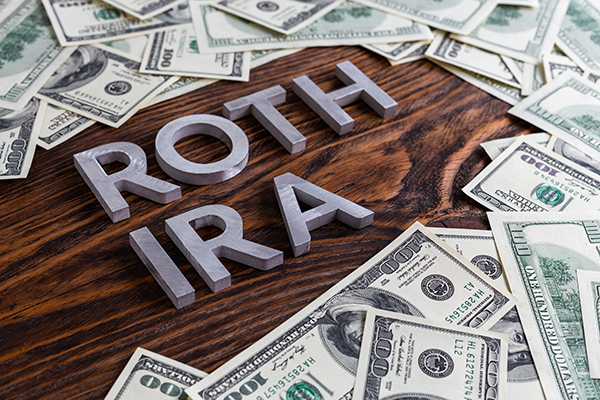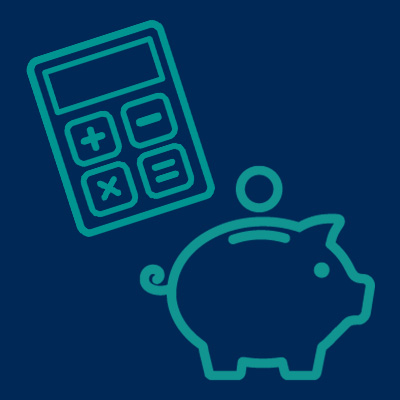Roth Conversions: The Good, the Bad, and the Ugly

In the world of retirement planning, few tools stir as much strategic debate as the Roth conversion. Converting pre-tax retirement assets from a traditional IRA or employer-sponsored plan into a Roth IRA can offer incredible long-term tax advantages—but it’s not without its risks.
Much like the classic Clint Eastwood film, there’s “The Good, the Bad, and the Ugly” to consider. Whether you’re a working high-income professional, quickly approaching retirement, or somewhere in between, understanding the nuances of Roth conversions can help you avoid costly mistakes and capitalize on potential opportunities.
The Good
The most attractive feature of a Roth IRA is its tax-free growth and withdrawals. Once the money is inside the Roth and you satisfy the five-year rule, any distributions taken after age 59½ are completely tax-free.
That means every dollar of appreciation, interest, and dividend earned in the account is yours to keep. For individuals who expect to be in a higher tax bracket in retirement—or who anticipate rising tax rates in general—Roth conversions allow you to “pay tax now” in exchange for tax-free income later. This can be especially powerful during retirement when managing tax brackets and minimizing taxable income is key to preserving wealth.
Another significant benefit is that Roth IRAs are not subject to required minimum distributions (RMDs) during the original owner’s lifetime. Traditional IRAs and 401(k)s require mandatory withdrawals starting at age 73 (or 75 for some under the SECURE 2.0 Act), which can force retirees to pull more than they need and generate unwanted taxable income.
Roth IRAs, in contrast, offer greater flexibility. You can let the money grow if you like, and you’re under no obligation to take distributions—an attractive feature for those who want to leave assets to heirs or plan for long-term care later in life.
From an estate planning perspective, Roth IRAs are also highly efficient. Although beneficiaries must empty inherited Roth IRAs within 10 years under the SECURE Act, they receive tax-free distributions during that window. This can be especially beneficial to adult children or grandchildren in high tax brackets. Passing on a Roth IRA, rather than a traditional IRA, can provide a substantial after-tax boost to your heirs’ financial futures.
One additional and often overlooked “good” is the strategic use of Roth conversions during low-income years, such as after retirement but before Social Security and RMDs begin. These “gap years” present an ideal time to convert traditional assets at relatively low tax rates, often filling up the 12%, 22%, or 24% brackets without spilling into the next tier.
Similarly, those who experience a temporary income dip—such as a job change, business loss, or sabbatical—may potentially find a well-timed Roth conversion to be extremely tax-efficient.

Avoiding a Big Tax Bill: 8 Ways to Plan Ahead
Bring your taxes in line with these 8 smart “above-the-line” and “below-the-line” deductions.
The Bad
Despite the many advantages, Roth conversions aren’t always a slam dunk. One of the key considerations is the immediate tax impact. When you convert funds from a traditional IRA to a Roth IRA, the converted amount is treated as ordinary income in that tax year. This can increase your taxable income, potentially pushing you into a higher tax bracket and triggering a host of unintended consequences.
For instance, a large conversion could phase out valuable tax deductions or credits, increase taxes on your Social Security benefits, and even raise your future Medicare premiums due to IRMAA (Income-Related Monthly Adjustment Amounts).
Another issue is the strain on cash flow. Ideally, you should pay the taxes due on a Roth conversion from non-retirement assets. If you use money from the IRA itself to pay the taxes, not only are you reducing the converted amount, but if you’re under 59½, the portion used for taxes may be subject to a 10% early withdrawal penalty. This can significantly reduce the long-term benefit of the strategy.
Moreover, not everyone has tens of thousands of dollars in taxable accounts lying around to cover a large tax bill. This makes Roth conversions a less practical solution for those who are cash-strapped or heavily concentrated in pre-tax retirement accounts.
It’s also worth noting that Roth conversions can affect financial aid and healthcare eligibility. Because conversions increase your adjusted gross income (AGI), they may reduce your eligibility for income-based programs such as Affordable Care Act health insurance subsidies or FAFSA-based financial aid for college-bound children. Even if you technically qualify for lower premiums or tuition discounts, a large conversion could temporarily disqualify you or inflate your expected family contribution.
Lastly, there is the element of timing risk. The success of a Roth conversion is heavily dependent on the performance of the market after the conversion completion. If you convert assets and then experience a market downturn, you’ll have paid tax on a higher value, only to see your portfolio shrink.
Prior to 2018, investors could reverse or “recharacterize” their Roth conversions if the market declined, effectively getting a do-over. But that option is no longer available. Once you execute a conversion, it’s permanent—so timing and market conditions play a critical role.
The Ugly
Where things can get especially ugly is when you hastily complete conversions or without proper planning. A poorly executed Roth conversion can create a cascade of tax headaches. For example, converting too much in a single year could push you into the top federal tax bracket, subject you to the 3.8% Net Investment Income Tax (NIIT), and increase the portion of your Social Security income that’s taxable.
It may also trigger the Alternative Minimum Tax (AMT) or impact income-based student loan repayment plans. The layered and complete tax code has far-reaching implications, and Roth conversions—while simple in concept—can have wide-ranging implications that ripple through your entire financial life.
Another “ugly” scenario arises when you pursue conversions for emotional reasons. Investors who feel strongly that taxes are bound to rise in the future may rush into large conversions without regard for their personal tax picture.
While it’s true that future tax rates are uncertain, the decision to convert should be based on current facts and long-term projections, not political speculation or fear. Converting a large sum all at once might feel proactive, but it often results in overpaying taxes unnecessarily.
Additionally, Roth conversions aren’t always ideal for older investors who don’t expect to live long enough to enjoy the tax-free benefits. If you’re already in your late 70s or 80s and living off RMDs, the math behind a Roth conversion may not work in your favor—especially when considering the tax cost, the time horizon to recoup it, and your overall estate plan.
Finally, Roth conversions are irrevocable under current tax law. There is no ability to recharacterize or change your mind after the fact. If you underestimate your taxable income for the year, receive a surprise bonus, or sell an asset for a large gain, the added income from your Roth conversion could push you into an unexpectedly high tax bracket—leaving you with a bigger tax bill than anticipated and no option to reverse course.
Final Thoughts
Roth conversions can be a valuable strategy, but they’re not appropriate for everyone. Like most things in financial planning, the best approach tailors itself to your goals, income, tax bracket, and long-term financial outlook. Often, the best results come from executing a series of partial conversions over several years, thoughtfully filling up tax brackets, and coordinating with other elements of your financial life—such as retirement timelines, Social Security claiming strategies, charitable giving, and estate planning.
Before executing a Roth conversion, consult with a qualified financial advisor and CPA to model the impact and weigh the trade-offs. When done correctly, a Roth conversion can create lasting tax-free income, more flexible retirement options, and a powerful legacy for your heirs. But when done poorly, it can generate tax bills, reduce benefits, and put a strain on your cash flow.
As with many things in life and finance, a Roth conversion is only as good as the strategy behind it.
This is intended for informational purposes only. You should not assume that any discussion or information contained in this document serves as the receipt of, or as a substitute for, personalized investment advice from Savant. Please consult your investment professional regarding your unique situation.

